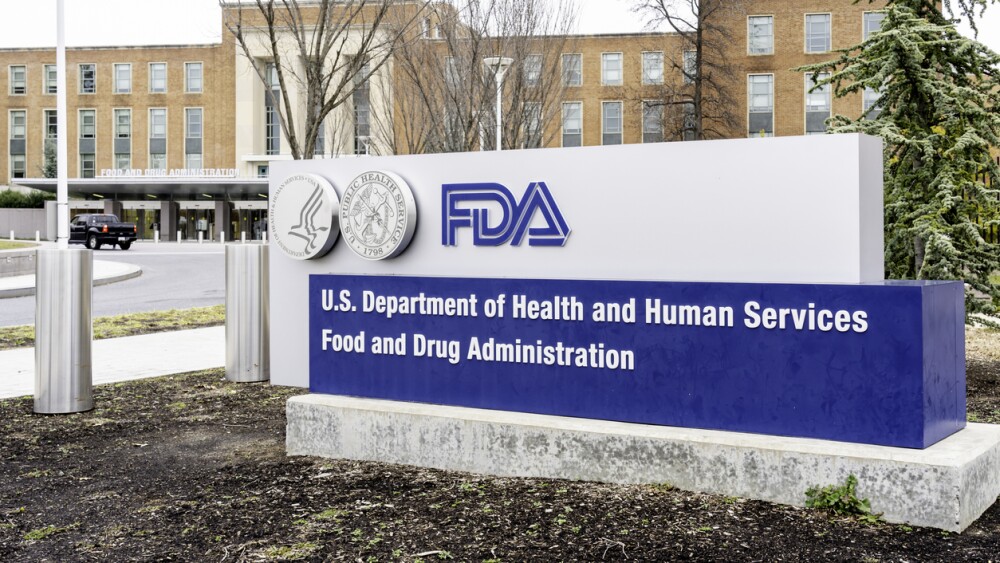The overturning of the FDA’s lab-developed tests rule is just the tip of the iceberg. With the loss of Chevron deference, power has shifted from federal agencies to the courts, with potential implications for everything from the FDA shortage list to CMS drug price negotiations.
The power struggle between the branches of the U.S. government has been particularly evident this year—and the FDA has not been immune. Last month, a federal court struck down an FDA rule that extended its interpretation of diagnostic products to include laboratory-developed tests, which allowed them to be regulated as medical devices. The decision, should it stand, would exempt tens of thousands of laboratory tests from FDA requirements and is a possible sign of things to come following the loss of Chevron deference, overturned by the U.S. Supreme Court in June 2024 in the landmark case Loper Bright Enterprises v. Raimondo.
“This is the first significant decision that uses Loper Bright to come to a determination that is probably different than a court would have reached under the Chevron deference,” John Vaughan, partner at Holland & Knight, told BioSpace. “I think this is the first real-time that you’ve seen the FDA’s authority challenged under this new paradigm. Most importantly, the Supreme Court shifted the responsibility for determining ambiguous statutes from an agency to the courts.”
The Chevron doctrine allowed courts to defer to federal agencies’ reasonable interpretations of ambiguous statutes. With Chevron overturned, the agencies will have to be far more careful when establishing guidelines and regulations, as legal challenges to their authority become much more likely, Vaughan said.
Though the fallout from the loss of Chevron deference is still in its early stages, there are already legal cases that have emerged to challenge decisions made at federal agencies. In addition to the laboratory-developed tests (LDTs) rule, there is an ongoing legal battle between the compounding industry and the FDA over the production of GLP-1 weight loss drugs, with Eli Lilly and Novo Nordisk weighing in to defend their own interests. Drugmakers fighting the Inflation Reduction Act (IRA) have also turned to Loper Bright in an attempt to avoid drug price negotiations with the Centers for Medicare and Medicaid Services.
In this article, BioSpace looks at these three examples, all still being litigated, to shine a light on the potential consequences of this influential decision.
1. FDA Laboratory-Developed Test Rule
In May 2024, the FDA issued a final rule to make explicit that in vitro diagnostic products (IVDs) are medical devices, with the agency stating that the action was required to assure the safety and effectiveness of IVDs offered as LDTs.
The rule was unpopular with the clinical laboratory industry, with the Association for Diagnostics & Laboratory Medicine stating that the rule would limit access to LDTs, and the American Clinical Laboratory Association leading the legal action against the agency.
The judgment, delivered on March 31 at the District Court Eastern District of Texas, struck down the FDA’s final rule on LDTs. Set to go into effect in May 2025, the final rule would have affected approximately 80,000 tests produced by almost 1,200 laboratories. These companies can now produce the tests without needing to comply with FDA requirements.
Though the FDA may have lost in the federal courts, this does not necessarily mean that the case is over, as the agency could appeal the decision. Vaughan said that he could not speculate on whether the FDA would do so but noted that a decision not to appeal would effectively signal that the agency agrees with the interpretation of the court.
One element Vaughan picked out from the case is that the court, in its judgement, highlighted that there was an absence of clear congressional intent to bring LDTs under the FDA’s authority, which indicated that the agency had overstepped its bounds under the new Loper Bright paradigm.
“When you read Loper Bright, there is still room for the regulator to enact regulations,” Vaughan stated. “If they make regulations that are very consistent with their statutory authority, it is likely that those regulations would survive judicial scrutiny. But we’re in a new area now where certain cases like this—hyper-technical interpretations of statute—will lead federal courts to a different conclusion than they would have had under Chevron 12 or 24 months ago.”
2. FDA Drug Shortage List
The high demand for Eli Lilly’s and Novo Nordisk’s GLP-1 weight loss drug treatments, Zepbound and Wegovy, respectively, led to nationwide drug shortages. It is the FDA’s responsibility to help manage drug shortages when they occur, in part by maintaining a database that lists the drugs that are currently in short supply.
“Up until very recently, no one cared if a drug came on or off the drug shortage list,” David Rosen, partner at Foley & Lardner, previously told BioSpace. “If anything, the reaction was, ‘Okay, it’s off shortage, everybody’s happy.’ That was until what happened with the GLP-1s.”
The interest in GLP-1s and their supply issues arose as compounders began selling versions of the popular drugs. Compounders often step in to supply the market to meet the medical demand when a product goes on the FDA’s shortage list, but once the product is withdrawn from the list, compounders are supposed to cease production.
This issue is at the heart of a legal battle between the FDA and the compounding industry, which sued the agency following the drugs’ removal from the shortage list in a bid to continue profiting off GLP-1s. The Outsourcing Facilities Association (OFA), a trade group representing compounding pharmacies, specifically mentions Loper Bright in its original case against the FDA for removing Lilly’s drug from the shortage list, suggesting that the agency’s notice of decision “rests on an erroneous reading of statutes.” In a subsequent filing after the FDA also dropped Novo Nordisk’s drug from the list, OFA’s case also references Loper Bright in its arguments against the agency.
Previously, the FDA had deference from the courts to determine drug shortages, but Rosen noted that this process was not well codified, nor was it clearly in the public domain. This may mean that the FDA has to issue new regulations or Congress will need to provide it explicit authority to ensure it can manage the drug shortage list unchallenged.
Ultimately, however, Vaughan stated, “When there’s not a shortage, it’s very difficult for a compounding pharmacy to credibly say they need to continue to do X or Y because there are intellectual property and regulatory exclusivity rights protecting the drug developers.”
Indeed, in late April Judge Mark Pittman rejected the OFA’s request for an injunction that would have allowed compounders to continue producing their copycat versions of Novo’s drugs, and last month he did the same for Lilly, upholding the FDA’s prior declaration that Lilly’s GLP-1s are no longer in shortage.
3. CMS’ Drug Price Negotiation Programs
The Biden administration highlighted the IRA as one of its crowning achievements. The law included a provision to allow for the Medicare price of selected drugs to be negotiated between the Centers for Medicare and Medicaid Services (CMS) and drugmakers. Not surprisingly, then, drug developers that have had their products selected have almost universally reacted with legal action in an attempt to block price negotiations. The cases against CMS relied on several common claims, including violations of the First and Fifth Amendments and of the Administrative Procedure Act, among other claims.
With the loss of the Chevron deference, there could be an additional angle of attack for such litigation. Vaughan noted that he sees the Medicare price negotiations as “ripe” for challenge under the Loper Bright ruling. Indeed, a recent lawsuit launched by Teva in January does contain a reference to Loper Bright in support of its case against drug pricing provisions in the IRA.
In its analysis, the law firm Mintz suggested it would be likely that other manufacturers and plaintiffs would center Loper Bright in their arguments that parts of CMS’s implementing guidance on price negotiations are invalid. Brownstein, a lobbying and law firm, outlined that it could also be possible to challenge CMS’ interpretation of which drugs are eligible for price negotiation and the methods used to determine maximum fair price.
Vaughan said he expects to see a lot more challenges in the coming years. For now, he added, “agencies will necessarily need to be much more judicious in issuing regulation—making sure that those regulations are very well grounded in an express grant of statutory authority to the agency.”






